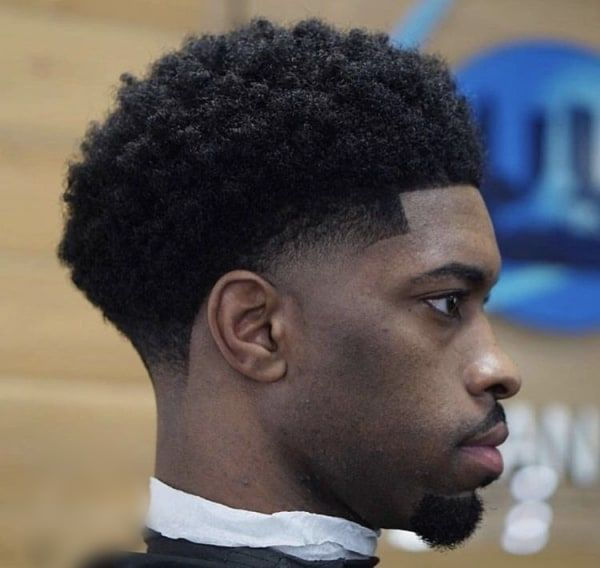Ultimate Guide to Mastering Barber Skills
- fadecuts360
- Aug 1
- 4 min read
Barbering is more than just cutting hair. It is an art form, a craft that requires skill, patience, and a keen eye for detail. Whether you are a beginner looking to start your journey or an experienced barber wanting to refine your skills, this guide will provide you with the essential knowledge and techniques to master the art of barbering.
In this comprehensive guide, we will cover everything from the basic tools of the trade to advanced cutting techniques. You will learn how to create different styles, understand hair types, and provide excellent customer service. Let’s dive in and explore the world of barbering.
Understanding the Basics of Barbering
Before you can master barber skills, you need to understand the basics. This includes knowing the tools you will use and the different types of hair.
Essential Tools for Barbers
Every barber needs a set of essential tools. Here are the must-haves:
Clippers: These are your primary tool for cutting hair. Invest in a good quality clipper that suits your needs.
Scissors: A pair of sharp scissors is crucial for precision cutting. Look for scissors that feel comfortable in your hand.
Combs: Combs help you section hair and create clean lines. Have a variety of combs for different styles.
Razors: For those clean shaves and detailed work, a straight razor or safety razor is essential.
Cape: A barber cape keeps hair off your clients and protects their clothing.
Different Hair Types
Understanding hair types is vital for any barber. Here are the main categories:
Straight Hair: This type is easy to cut and style. It tends to lie flat and can be fine or thick.
Wavy Hair: Wavy hair has a natural texture that can add volume. It requires different cutting techniques to enhance its shape.
Curly Hair: Curly hair can be challenging but rewarding. It requires special techniques to avoid frizz and maintain shape.
Coily Hair: This type is very textured and can shrink significantly when dry. It needs careful handling to avoid breakage.
Mastering Cutting Techniques
Once you have the basics down, it’s time to learn cutting techniques. Here are some popular styles and how to achieve them.
The Fade
The fade is a classic barber style that blends hair from short to long. Here’s how to do it:
Start with the Clippers: Use a guard that matches the desired length on the sides.
Create the Fade: Start at the bottom and work your way up, gradually changing guards to blend the hair.
Detailing: Use scissors or a trimmer to clean up the edges and create a sharp look.
The Undercut
The undercut is another popular style. It features short sides with longer hair on top. Here’s how to achieve it:
Section the Hair: Use clips to separate the top from the sides.
Cut the Sides: Use clippers to cut the sides to your desired length.
Blend the Top: Use scissors to trim the top while keeping the length.
The Crew Cut
The crew cut is a timeless style that is easy to maintain. Here’s how to cut it:
Use a Guard: Start with a clipper guard that matches the desired length.
Cut the Sides and Back: Work from the bottom up, ensuring an even cut.
Trim the Top: Use scissors to create a uniform length on top.
Providing Excellent Customer Service
Barbering is not just about cutting hair; it’s also about providing a great experience for your clients. Here are some tips for excellent customer service:
Build Rapport
Take the time to get to know your clients. Ask about their preferences and listen to their needs. Building a relationship will keep them coming back.
Maintain a Clean Workspace
A clean and organized workspace reflects professionalism. Always keep your tools sanitized and your station tidy.
Offer Advice
Clients often appreciate advice on hair care and styling. Share your knowledge to help them maintain their look between visits.
Continuing Education and Practice
The world of barbering is always evolving. To stay ahead, consider the following:
Attend Workshops
Look for local workshops or classes to learn new techniques. Networking with other barbers can also provide valuable insights.
Practice Regularly
The more you practice, the better you will become. Consider offering free or discounted cuts to friends and family to hone your skills.
Stay Updated on Trends
Follow industry trends through social media, magazines, and barbering forums. Staying informed will help you offer the latest styles to your clients.
The Importance of Personal Branding
As a barber, your personal brand is crucial. Here are some ways to build it:
Create a Portfolio
Showcase your work through a portfolio. Take high-quality photos of your best cuts and styles.
Use Social Media
Social media is a powerful tool for barbers. Share your work, engage with clients, and promote your services.
Develop a Unique Style
Find what makes you unique as a barber. Whether it’s a specific technique or a signature style, let it shine through in your work.
Conclusion: Your Journey to Mastery
Mastering barber skills is a journey that requires dedication and practice. By understanding the basics, honing your cutting techniques, providing excellent customer service, and building your personal brand, you can become a successful barber.
Remember, every great barber started as a beginner. Embrace the learning process, stay passionate, and keep pushing yourself to improve. The world of barbering is waiting for you to make your mark.

With the right tools, techniques, and mindset, you can master the art of barbering and create a lasting impact in the lives of your clients. Happy cutting!



Comments